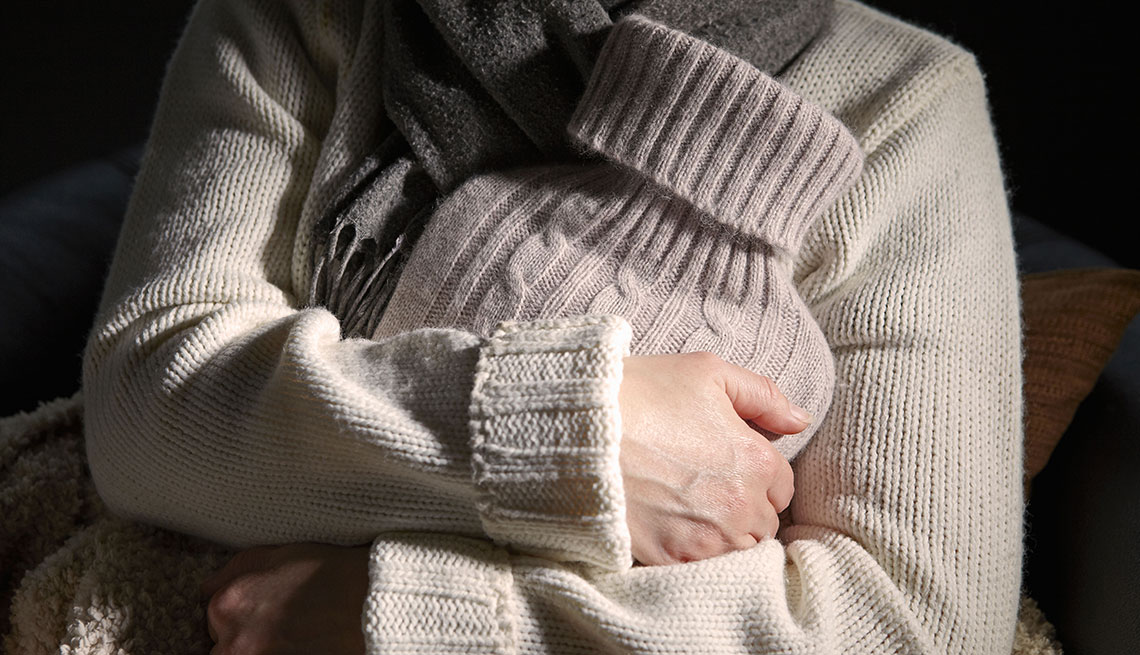
8 reasons you’re always cold
- Select a language for the TTS:
- UK English Female
- UK English Male
- US English Female
- US English Male
- Australian Female
- Australian Male
- Language selected: (auto detect) - EN
Play all audios:

A common symptom of PAD is muscle pain or weakness that begins with physical activity, such as walking, and stops within minutes after resting. Another warning sign is that one foot may feel
colder than the other, according to the National Heart, Lung, and Blood Institute. The legs, feet and toes may appear pale, discolored or blueish. “The most common area of peripheral
arterial disease is in the legs, but it can happen anywhere — cerebrovascular, carotid, arms, kidneys, abdomen — you name it,” says Jay Varma, M.D., a vascular and interventional radiology
specialist at Fairfax Vascular Center in Fairfax, Virginia. The condition — which can be treated with lifestyle changes, medication and surgery, depending on the patient’s symptoms — is
especially common among adults 50 and older. 7. RAYNAUD’S DISEASE Raynaud’s disease is a disorder that causes the blood vessels in the extremities to narrow in response to coldness or
stress. These narrowing “attacks” most often affect the fingers and the toes, causing them to feel icy and appear pale. When you warm up, the vessels expand again. According to the National
Institute of Arthritis and Musculoskeletal and Skin Diseases, scientists don’t know exactly what causes Raynaud’s. They do know that more women than men are affected by the phenomenon; genes
may play a role, the institute says. 8. MEDICATION COMPLICATIONS Some drugs may make you feel colder as a side effect, including beta-blockers used for heart disease. These blockers help
the heart relax but may cause you to feel dizzy, tired, nauseous and colder in your hands and feet. Some ADHD (attention deficit/hyperactivity disorder) medications can cause you to feel
cold and may lead to Raynaud’s, according to Mayo Clinic. Talk to your doctor if you suspect medication side effects are causing you to feel cold. He or she may be able to lower your dose or
find an alternative medication. AGE-RELATED CHANGES CAN MAKE YOU MORE PRONE TO BEING COLD A few age-related changes can cause your internal thermostat to dip. • THINNING OF THE SKIN. As we
get older, the multilayered fat pads under the skin — the body’s insulation — get thinner, explains Sharon Brangman, M.D., a professor of medicine at SUNY Upstate Medical University in
Syracuse and a past president of the American Geriatrics Society. “That’s why some people can see their veins and blood vessels so easily under the skin because that cushion thins out,” she
says. “That insulation is gone, and your blood vessels are closer to your skin where they are more exposed to changes in temperature.” • BRAIN CHANGES. In the brain, the center that
regulates body temperature — the hypothalamus, commonly called the natural thermostat — becomes less sensitive as we get older. The result: Your body may be slower at adjusting to changes
in temperature. • A SLOWING METABOLISM. “When you have a high metabolism, you’re often creating more energy, and that might also give you some background warmth,” Brangman says. “But as
your metabolism slows down, there’s less energy being created, so you might feel cold. “These are all a part of the normal changes that happen as we get older. It’s important to remember
that aging is not a disease, it’s a natural state that everybody goes through,” Brangman says. _Editor's Note: This story, first published Feb. 23, 2018, has been updated to include new
information, with additional reporting from Joyce Sampson._
